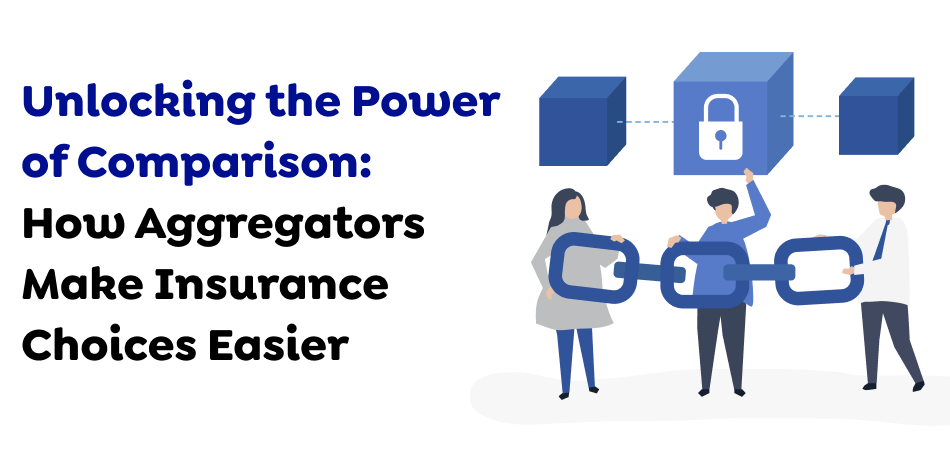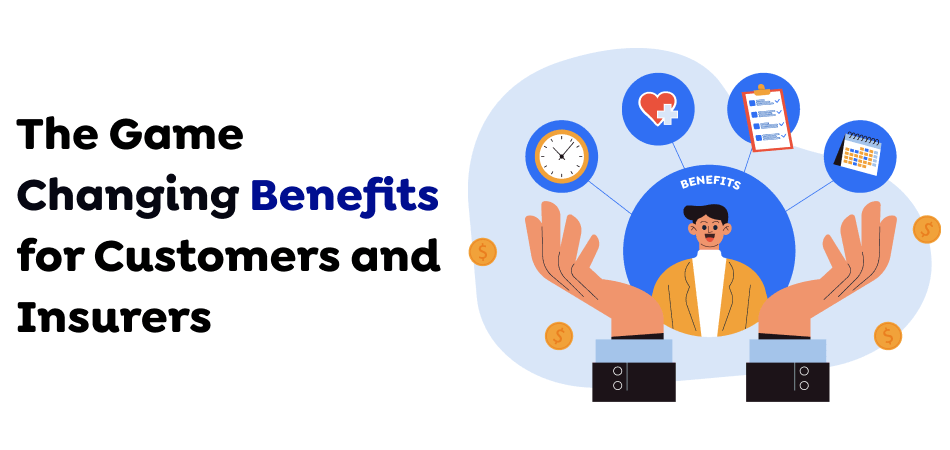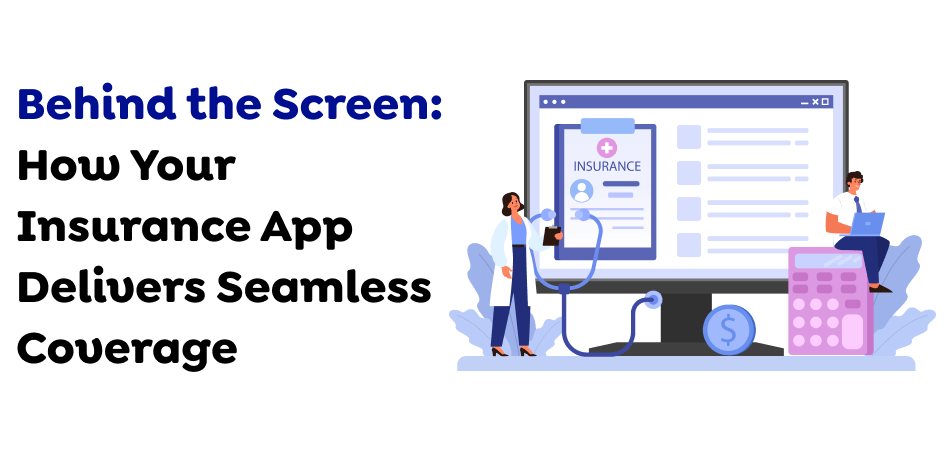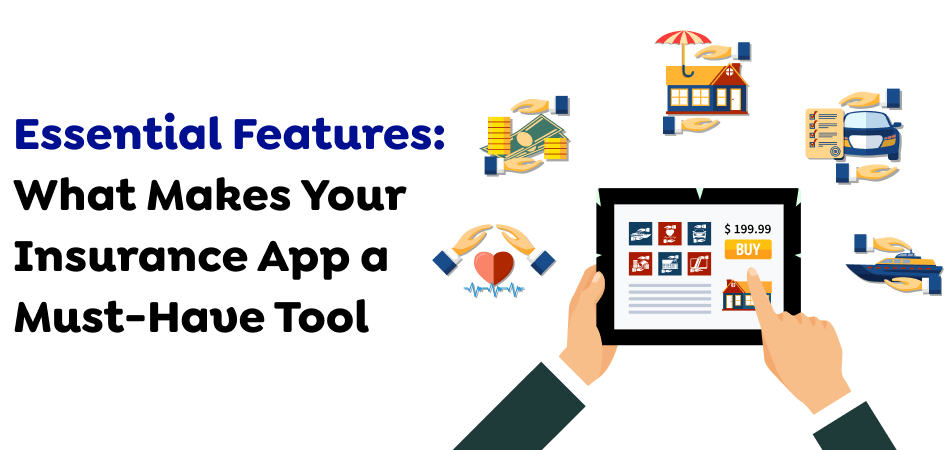Write Us
We are just a call away
[ LET’S TALK AI ]
X
Discover AI-
Powered Solutions
Get ready to explore cutting-edge AI technologies that can transform your workflow!


Searching for an insurance plan in today’s fast-paced environment is like hunting down an invisible needle in an ever-increasing maze of options and policies available. Many feel daunted and bewildered by what lies before them. But worry no longer; insurance aggregators provide a way out.
Insurance aggregator platforms have emerged as powerful tools, allowing users to easily compare and purchase policies from various providers in one convenient place. Just imagine having someone trustworthy help navigate the complexities of insurance for you while offering tailored solutions tailored specifically for you and your spending budget. That is precisely what insurance aggregators offer! One primary consideration when creating such platforms is the cost of developing an insurance aggregator.
In this blog, we investigate the factors affecting the cost of creating an insurance aggregator and provide insight to assist businesses in making informed decisions.

Insurance aggregators are online platforms that facilitate the analysis of various insurance products provided by different insurance firms. They function as intermediaries between customers and insurance companies, making completing the sometimes daunting process of choosing an insurance plan easier. They gather information related to insurance and then present it in an accessible format, helping consumers make informed choices regarding their insurance needs.
Using an aggregator license makes it possible to evaluate the costs, coverage, and premium amounts of various insurance mobile app development policies offered by diverse insurance providers. This saves time and energy and helps customers choose the right insurance policy to meet their requirements. The customer requires an insurance aggregator to provide specific personal information such as name, date of birth, and insurance needs. After processing the data the platform has collected, it will create a list of current insurance policies offered by various insurance providers, their costs in addition to benefits, and the quantity and limits to evaluate.

Insurance apps facilitate rapid and straightforward interaction between the insurance company and its clients. The app automates manual tasks and reduces the need for paperwork. Many business executives recognize the necessity of integrating mobile applications into their daily operations. Let’s take a look at the benefits of using insurance applications for insurers and customers:
Today’s customers expect an effortless digital experience while communicating with their insurance company. They want content based on needs to be easily accessible, easy access to insurance products, and more visibility regarding policy information. Here are some of the significant advantages that insurance mobile apps can bring to customers.
An insurance app allows customers to access a variety of insurance companies worldwide. It eliminates the need for in-person visits and long-winded customer support calls and gives customers a simple means of contacting insurance firms.
The insurance mobile application lets customers instantly review their policy eligibility and coverage information whenever and wherever they are. It provides security for customers and increases their satisfaction with the service.
When you need assistance regarding the policy, experts and insurance professionals are one click away with the mobile application. Using this application, you’ll receive expert guidance and advice without the hassle of setting up appointments in person.
It doesn’t matter if customers need to fill in payment renewal forms, payments, or another form. They can access essential documents online on their tablets or smartphones, share them quickly, and use self-service services. This is a simple and transparent experience for the client and insurance provider.
One of the most important benefits of using an application is automatic push notifications, which ensure the insurance agent or customer does not forget a renewal date or an update. This will allow them to maintain the coverage they have in place and prevent a loss of protection.
An insurance mobile app development can provide immediate alerts and push notifications to all parties about the latest policy details and changes, as well as new benefits and discount offers. Thus, they will have the most current coverage information.
If and whenever you need any assistance, regardless of location, the mobile application provides an easy way to connect clients to agents in the vicinity and service centers to provide urgent assistance.
Mobile applications offer advantages for insurers, such as cutting operational expenses and simplifying procedures. Insurance firms can also enjoy other benefits by developing a mobile app. Here are a few of the most important benefits.
Mobile apps provide an open line of communication between insurance firms and their clients. Chatbots integrated with the mobile app allow constant communication 24 hours daily, instantly responding to queries and reducing the workload.
Mobile apps can automate most jobs currently performed manually by insurance firms, such as making claims and creating quotes. The app can reduce cash and time and improve efficiency by decreasing mistakes.
Insurance companies can use mobile applications to collect information about how users use them to gain insights into customer’s behavior, preferences, and requirements. This can help them deliver customized customer experiences and create innovative products and services.
Utilizing the data collected by the app on mobile, insurers can analyze the data and offer personalized suggestions and coverage options. This will improve customer satisfaction and boost potential sales.
Collecting feedback is essential to delivering what your client is seeking. Mobile apps can help you gather instant feedback to determine and resolve problems, thereby improving customer service quickly.
An app for mobile devices goes far beyond providing customers with a smooth customer experience. It can also help improve the productivity of insurance agents by providing them with the appropriate devices to monitor policies, manage claims. Also help in efficiently closing sales, which aids in increasing total sales and revenues.
Through streamlined applications and immediate policy issue capabilities, Mobile apps dramatically reduce the time needed to conclude insurance transactions, thereby significantly reducing customer acquisition rates.

The on-demand insurance mobile app works based on giving immediate access to insurance coverage at any time and anywhere the need arises. The following is an outline of how an application generally works.
The first step is to download the insurance mobile app via the store for apps and then sign up to create an account. In the registration process, they must fill in their personal details and then build a profile that includes specifics like name, contact details, and details about their payment preferences.
After registration, users can look through the various insurance policies in the application. They can choose from policies for travel insurance, auto insurance, rental insurance, and other kinds of insurance. Customers can choose the kind of insurance they require and tailor their policy based on factors like limitations on coverage, deductibles, and the duration of the coverage.
Once they have selected the insurance coverage, the user receives immediate quotes and calculated premiums in the app. The application employs algorithms to analyze risk factors and decide on the most appropriate rate according to the user’s profile and the selected coverage choices. The user can review the quote and include specifics, such as coverage conditions, premium amount, and additional charges or fees.
To complete the purchase, users will require supporting documents, including identification proof, vehicle registration documents, and a trip itinerary related to their chosen policy. The app checks the authenticity of customer documents to ensure they comply with legal guidelines and policies.
After all documents are confirmed, customers can pay securely for the insurance plan they have chosen in the application. The web application integrates with secure payment processors for seamless transactions, which allows users to pay with debit and credit cards, mobile wallets, and other payment options supported by the application.
If the payment is successful upon successful payment, the mobile application generates and issues the insurance contract immediately. The insured receives a version of their policy and proof of insurance via email or in the application. Policy details, like the coverage’s terms and conditions, policy numbers, and contact details, are available to app users through their accounts.
It provides its users a centralized system to handle their insurance policies, including policy renewals, coverage updates, and claims processing. When a claim is needed, users can begin settling it using the app by providing relevant information and supporting documentation. The system facilitates quick settlement and processing of claims and provides users with a smooth and easy user experience.
Throughout the insurance lifecycle, users can access help and support through the application. Customer engagement representatives are on hand to answer questions, offer information on policy-related issues, and assist with any issues or problems they might encounter when using the app or managing their insurance policy.

The options you have to include will be based on the type of insurance your company operates, which includes health, life, property, or vehicle insurance. Below are the standard features that every insurance app should have.
The first page displays basic information about the insured person. It should be slim and tidy and have clear calls-to-action buttons.
The ability to filter quotes and other information is just one of the essential features to consider for insurance aggregator mobile app development. The Quote tab feature allows you to retrieve information from its database and connect you to an insurance company or simply state the cost of an insurance policy. Suppose the app developer can use Big Data. In that case, it can offer clients discounted rates or other advantages based on their frequent requests for different policies.
This web page, which is built into the development of mobile apps for car insurance, shows the policy’s particulars, how to use it, and the size of the benefits. For example, an insurance application for Android and iOS clients shows specific information on the difference.
Incorporating a claim filing section is the top priority in developing an insurance-related web application. Filing claims is no longer a hassle; it has become a thing of the past. Submitting proofs is as easy as simply clicking an image, whether via the scanner of an app or a camera on the smartphone, if the whole process can be completed on one page.
Generally speaking, companies, including insurance companies, aren’t afraid to explore opportunities to enter an entirely new market segment. Push notification may even alter their business strategies if the need arises.
It is important to provide a reason for giveaways; the same goes for buyers who buy your products. So, make sure to send out regular push messages to inform people about the balance due and any forthcoming policies that could replace their current policies.
How can the client upload their files or even photos when you design an insurance program that does not include this feature? The mobile device application allows uploading documents via local directories for files. It can also upload data from third-party servers, such as email servers.
Chatbots aren’t that unusual anymore. They can be used as quick fixes for common-of-the-mill issues. What happens when there are unexpected circumstances? It’s impossible for a customer trapped with a damaged vehicle to trust pre-feeded responses. Therefore, when developing an insurance-related app, include an option to request a callback or connect with a rep. Calling in-app functionality is the most requested feature in insurance apps. It will allow the app to become what it is: one that can prevent disasters and has a quick emergency response machine.
It is not a matter of guessing. Integrating a payment gateway is essential for every insurance development for mobile applications that accept payment through all the major networks. To build an insurance program that appeals to the majority of users, it’s essential to provide automated billing for EMIs or an easy-for-payment

Building an insurance aggregator costs between $35,000 and $250,000. Various factors can affect the costs, like where the app’s development firm and the app’s UI/UX style and features list, along with the technology stack used in the developing process. Developing an extremely complicated app with numerous features can add more cost than a simple application with fewer options. Finding the most reliable mobile app development company to receive a custom quote for creating an insurance mobile app is vital.
The process of developing an application for insurance aggregators is exciting. So, before you dive into it, you should know what aspects can affect its costs.
The sophistication and capabilities of the aggregator platform dramatically influence the cost of development. Simple aggregators with essential features like comparing policies and generating quotes and online purchase capabilities cost less. On the other hand, platforms with more sophisticated features such as AI-driven suggestions, personalized user experience, and integration with third-party providers. The more complicated the functions, the more costly the development costs.
Selecting the right technology stack is essential in determining the development cost. The platform’s scaling, security requirements, and expectations for performance determine the choice of technology, such as programming frameworks, languages, databases, and hosting options. Selecting modern and robust technologies could result in more upfront expenses, but it could also result in the most efficient and flexible platform over the long term.
Design and the user experience (UX) of a platform for aggregating are crucial to keeping and attracting clients. Investing in user-friendly UX layouts, responsive designs, and visually pleasing interfaces could increase engagement and boost conversion rates. The downside is that incorporating top-quality components of design and UX improvements can increase the expenses for development because it requires specialist skills and a meticulous focus on minor details.
Insurance aggregator platforms depend on integrating data into the insurance companies’ systems to provide real-time quotes and insurance information. Implementing robust APIs with continuous data integration ensures the platform’s performance. The development cost could be different due to the complexity of integration with various insurance companies. Furthermore, fees for licensing and costs for accessing third-party APIs could impact the overall cost.
The insurance aggregator platform must comply with regulations and laws governing data protection. Adhering to industry rules, such as GDPR, HIPAA (if you are dealing with health insurance), and other insurance regulatory requirements, is an added layer of difficulty and could necessitate specialized expertise. The budgeting process for legal consultations and the necessary compliance steps are crucial to prevent penalties and legal obligations.
Testing and quality control are essential in identifying and fixing any bugs, glitches, or security flaws in the platform. Tests, which include functional testing, performance testing, security testing, and user acceptance testing, take time and money. Affording a sufficient budget for testing will ensure the platform’s stability, security, and overall high quality.

Creating, planning, designing, and evaluating your insurance mobile application is essential to ensure smooth functionality and a pleasant user experience. Below are guidelines for building an insurance mobile application.
Establishing the goals and scope of your insurance mobile app is the most essential phase in developing it. Study your market’s target, competitors, and insurance landscape. Your application should take into account customer demands and current trends. Choose the types of insurance you’ll provide (auto health, auto, or home) and what services you’ll provide.
Develop a user-centric design user-centric design that ensures user-friendly navigation and ease of use when you plan to develop an insurance-related mobile application. It’s essential to design mockups or wireframes that show the layout and flow of your app. Ensure you have a modern, straightforward design that maintains an unchanging branding image. It is essential to prioritize user experiences when purchasing insurance, making claims, managing policies, and being adaptable to screens and gadgets of different sizes.
In determining the price of hiring an app developer, consider factors such as the technology platform (iOS or Android), programming languages (Swift or Kotlin), and backend frameworks. Make sure you choose your stack of technology carefully. If it is confusing, then make sure to employ dedicated developers.
Design and develop core features like user registration, selection of policies, premium calculation, and safe payment processing. In addition, a robust authentication method must be developed to secure user’s personal information and integration:
APIs allow you to connect your application with third-party services, including insurance databases, CRM systems, Payment gateways, and insurance databases. This allows your application to transfer data to external services. Use geolocation APIs for location-based services such as accident reporting and service center locators.
Ensure your application is tested thoroughly on various operating systems, devices, and scenarios involving the services of a reliable mobile application development firm to find issues, bugs, glitches, and performance issues. Testing for user acceptance is an effective method to ensure the app meets users’ expectations. Conduct security checks to safeguard your data from vulnerabilities and prevent them. Additionally, make sure to collect feedback from beta testers so that you can improve your security.
You should develop launch plans to boost visibility in app markets, including App Store Optimization (ASO). Create engaging promotional materials like app screenshots, videos, and app descriptions. Utilize influencers, social network, and targeted advertisements to target your ideal users.

Creating an insurance aggregator to compare insurance policies and purchases; however, it is a significant investment. If you are planning to build your insurance aggregator, think about these cost-saving strategies:
Focus on features that customers want to see often. You can also begin by creating a primary product (MVP) that concentrates on essential elements like insurance comparison quotes and other details about the policy.
Various open-source software libraries exist for the most common functions, such as data encryption and user authentication. These will assist you in creating an insurance-aggregator application from beginning to end.
Using this method, you test continuously to discover and fix bugs sooner. Thus, it avoids the costly rework of creating the insurance aggregator application.
The development team should focus on the most important functionalities. Consider outsourcing less critical tasks, such as designing UI/UX and developing backends, to app development firms.
If you want to lower the expense of creating an insurance aggregate application, opt for a cross-platform solution. This way, you only have to cover the costs of developing the application once, and it will eliminate the costs of producing the app on its own.

An insurance aggregator is a platform that displays and provides specific information about different types of insurance policies. It permits users to evaluate policies offered by various insurance providers in one location. Multiple factors affect the total cost of creating an insurance aggregator platform.
Although cost-related considerations are essential for a successful and profitable platform, companies can create a robust insurance aggregator that meets users’ needs and propels expansion by analyzing the platform’s complexity, technological stack, design requirements, and testing procedures. Even though costs could fluctuate, finding insurance mobile application developers who can state the exact cost per your requirements is crucial.
Ready to elevate your project with Techugo? Connect with us today to explore innovative solutions and start your journey toward success. Get in touch now!
Write Us
sales@techugo.comOr fill this form